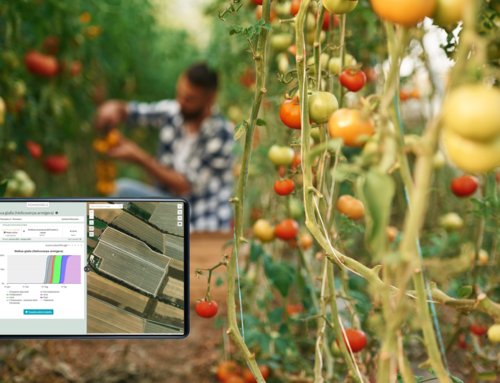The crop rotation has very ancient origins: before the Middle Ages the land was already cultivated by alternating years to allow the accumulation of water. In the early Middle Ages, the three-years rotation began to spread by alternating autumn cereals with a summer crop followed by a year of rest.
The application of crop rotation is still a widespread practice today and encouraged by agricultural policy at European level.
Why crop rotation
It is possible to identify the principles on which to base the rotations, which can be different according to the farm strategy and the farmer’s needs.
The main agronomic advantages of this technique are closely related to increasing the physical and chemical fertility of the soil. This is obtained thanks to the different conformation of the root systems and a different carbon/nitrogen ratio of crop residues. This ratio has an important impact on the humic balance of the soil.
In addition, crop rotation reduces allelopathy, the occurrence of crop-specific pathogen outbreaks and the settlement of weeds typical of a given crop.
From an economic point of view, rotation requires the farm to be efficient in managing different crops, which means machinery, expertise and market diversification. However, in the most frequent case where the farm applies crop diversification in the same year, this also leads to better work organization, more continuity in cash flow and a reduction in risk related to climate change, specific pathogens or the market.
From an environmental point of view, rotation makes it possible to maintain greater landscape and ecological variability, as well as reducing the persistence of ecosystemic failures such as pest outbreaks.
Rotation techniques
Each farm defines its own rotation plan based on agronomic, environmental and economic aspects.
Classical agronomy distinguishes crops into 2 types, which must normally be alternated in order to apply an effective rotation:
- Improving crops: they improve soil fertility. These are crops can improve the physical fertility of soil thanks to deep root systems and/or the need for organic fertilization, such as corn. There are also short cycle leguminous plants, which fix nitrogen.
- Worsening crops: they leave the soil in worse physical-chemical conditions than they found it, as they reduce the organic matter and nutrients present. This class includes winter cereals.
In addition, some suggestions can be taken into account to determine which crops to grow in the field.
Tip No. 1: Calculate the humic balance
By alternating improving crops to worsening crops, it is possible to avoid the reduction of organic matter over time and maintain the physical fertility of the soil. In order to quantify the effect and thus know the organic matter trend of your soil over time, it may be useful to calculate the organic matter balance of each crop or its qualitative evaluation.
Tip No. 2: Alternate plants with different root systems
By alternating deep-root crops with surface root crops, different soil layers will be explored. As a consequence, the physical fertility of the soil will be improved, avoiding the formation of the ploughing sole.
Tip No. 3: Optimize timing
It is good to reduce the periods when the field has bare ground, especially in areas affected by erosion. For this reason, it is important to plan the cultivation cycles trying to keep the ground cover as continuous as possible.
Tip No. 4: Alternate botanical families
The “Crop planning” feature in Agricolus platform

Crop planning feature in Agricolus platform
One of the main needs of farmers is to keep track of their crop plan and visualize it in a concise and fast way. The “Crop planning” feature in Agricolus platform allows to:
- register and display the crops planted on different fields over the years
- plan efficiently the crops to be planted in the following seasons






